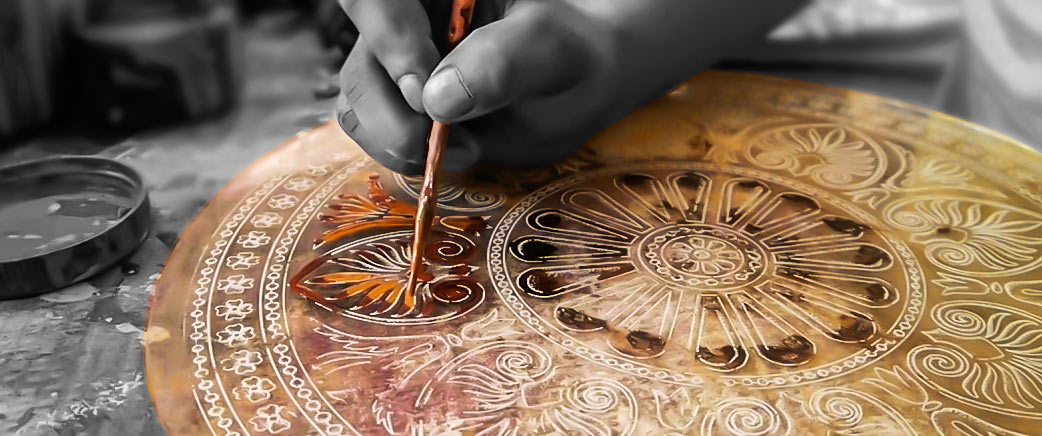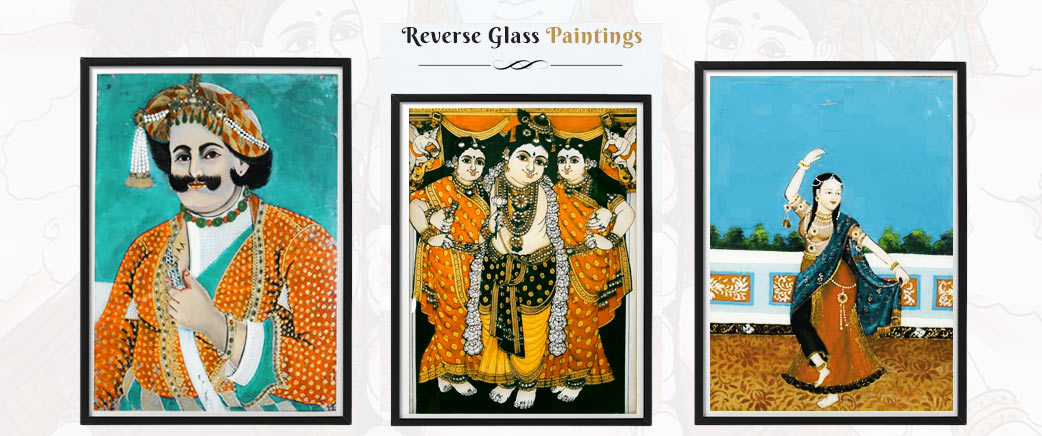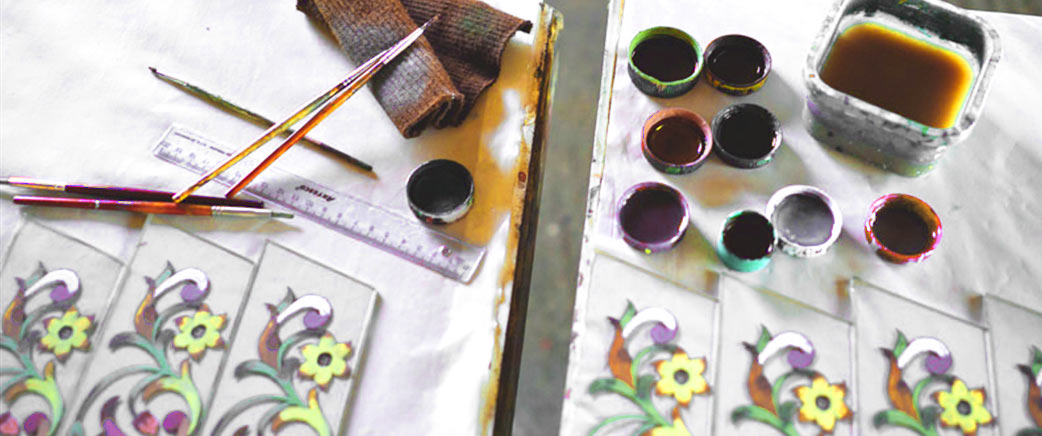
India has a significant history of reverse glass paintings. Reverse glass paintings are indeed a remarkable art form in the Indian art world. They involve creating intricate and beautiful paintings on glass surfaces, often with a highly detailed and delicate touch. The process of creating reverse glass paintings requires immense patience, skill, and time.
In reverse glass painting, the artist applies paint to the back side of the glass, allowing the image to be seen from the front. The glass lends depth and sparkle to the colors and textures of the painting, giving it a distinctive and intriguing visual impression.
In reverse glass painting, the artist applies paint to the back side of the glass, allowing the image to be seen from the front. The glass lends depth and sparkle to the colors and textures of the painting, giving it a distinctive and intriguing visual impression.
Reverse Glass Painting In India

In India, reverse glass paintings have a long history, especially in Rajasthan and West Bengal. Reverse Glass Paintings feature mythical stories, religious symbols, folk art, portraiture, and landscapes, among other things. To produce complicated designs and patterns, artists employ a variety of brushes, fine-pointed implements, and dazzling colors. They are renowned for their aesthetic worth and distinct charm, and require a high level of craftsmanship, precision, and attention to detail.
Process Of Making Reverse Glass Painting
The technique of making reverse glass artworks is truly magical and enthralling. Every stage of the process, from selecting the glass surface and preparing it for painting to the last strokes of the brush, is full of creativity and talent.
The ability of the artist to work in reverse, painting on the back side of glass, necessitates a distinct method and a thorough understanding of the medium. They must carefully design and visualize the composition, knowing that the finished product will be visible from the front through the glass.
The ability of the artist to work in reverse, painting on the back side of glass, necessitates a distinct method and a thorough understanding of the medium. They must carefully design and visualize the composition, knowing that the finished product will be visible from the front through the glass.
Material And Tools Used

- Glass
- Glass Paint
- Brushes
- Palette
- Tracing paper
Process
Prepare the Glass: Preparing the glass is the first and most important step in glass painting. Artists ensure that the glass surface is clean and free from any dust or smudges. They use a glass cleaner or a mild detergent to clean the glass and dry it thoroughly before starting the painting process.
Trace the Design: The next step is to sketch, and the artist’s need tracing paper to do so on glass. First, the artist creates a sketch on paper and then traces it onto the glass. The pattern or outline is traced with a pencil or pen on the backside of the glass using tracing paper or carbon paper. The design is then transferred to the glass surface.
Layering and Blending: In reverse glass paintings, painters use layers of paint. This allows glass paint to be layered to achieve depth and intensity. Artists let each layer dry before adding the next. Brushes are used to combine colors and produce shade and highlights.
Finishing Touches: Once the painting is finished, the artist lets it dry completely according to the need. Any necessary touch-ups or corrections are checked at the end.
Display and Protection: To protect the painting, the artist uses a clear varnish or sealer made especially for glass paintings. By doing so, any harm is avoided and the colors are preserved. When the artwork is finished, it is either framed or put on display to best show off its beauty. A reverse glass painting needs perseverance, accuracy, and creative flair. It’s a painstaking process that could take some time and repetition to get the hang of. But the final product is a magnificent and distinctive work of art that catches the imagination and astounds spectators with its enchanted beauty.
Trace the Design: The next step is to sketch, and the artist’s need tracing paper to do so on glass. First, the artist creates a sketch on paper and then traces it onto the glass. The pattern or outline is traced with a pencil or pen on the backside of the glass using tracing paper or carbon paper. The design is then transferred to the glass surface.
Layering and Blending: In reverse glass paintings, painters use layers of paint. This allows glass paint to be layered to achieve depth and intensity. Artists let each layer dry before adding the next. Brushes are used to combine colors and produce shade and highlights.
Finishing Touches: Once the painting is finished, the artist lets it dry completely according to the need. Any necessary touch-ups or corrections are checked at the end.
Display and Protection: To protect the painting, the artist uses a clear varnish or sealer made especially for glass paintings. By doing so, any harm is avoided and the colors are preserved. When the artwork is finished, it is either framed or put on display to best show off its beauty. A reverse glass painting needs perseverance, accuracy, and creative flair. It’s a painstaking process that could take some time and repetition to get the hang of. But the final product is a magnificent and distinctive work of art that catches the imagination and astounds spectators with its enchanted beauty.




